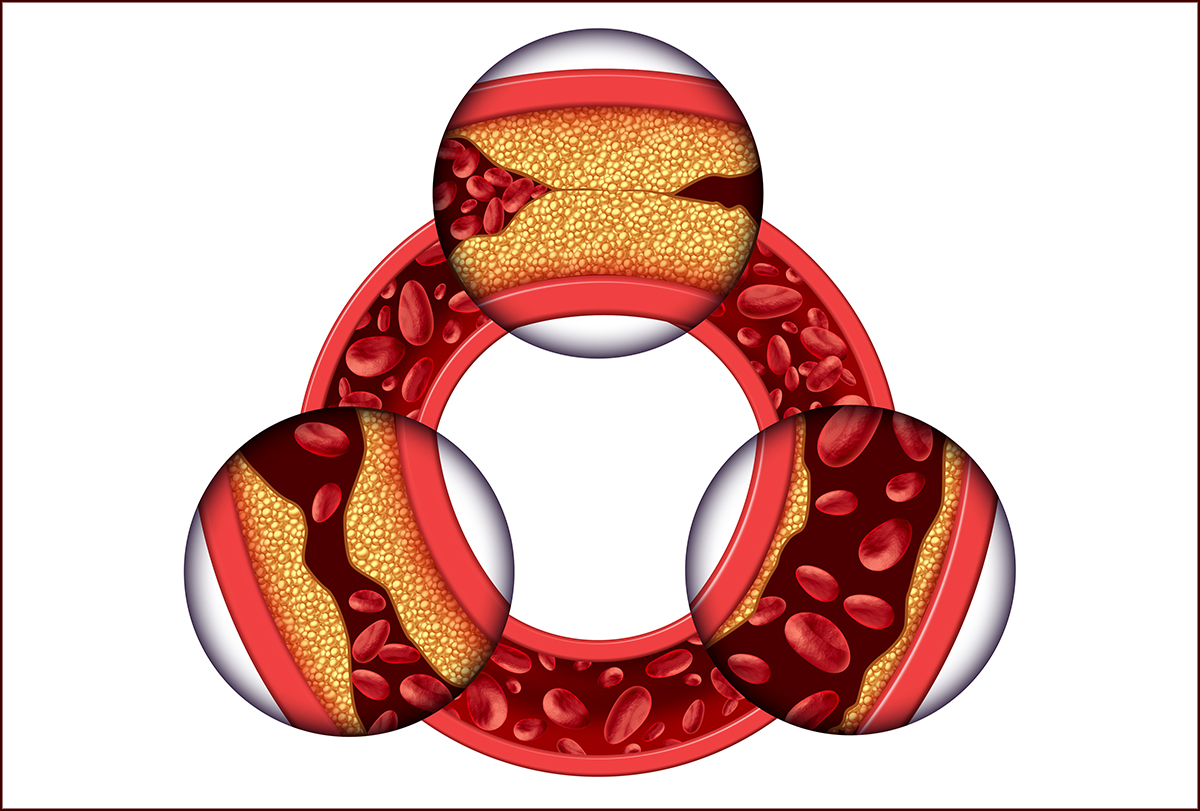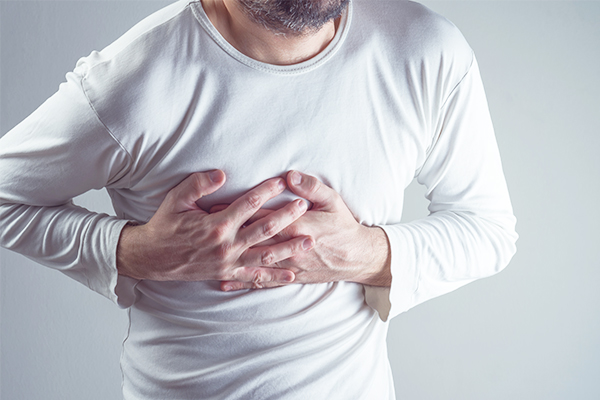In this article:
Arteries are blood vessels that carry blood away from the heart. Most of the arteries in the body carry blood rich in oxygen and nutrients to vital organs, structures, and tissues within the body.

Like pipes in your home or car, arteries can become clogged. Atherosclerosis is the condition in which arteries become clogged due to the buildup of a substance called plaque. (1) Plaque is a material that is made up of fat, cholesterol, and other substances in the blood.
As time progresses, plaque increases and hardens, leading to a narrowing of the arteries. This narrowing or clogging of the arteries can have profound effects on the body and health.
Possible Signs and Symptoms of Clogged Arteries
The initial stages of plaque buildup, or atherosclerosis, in the arteries is largely asymptomatic or without any noticeable symptoms. However, as the disease progresses, individuals can experience a variety of signs and symptoms that may be a sign of clogged arteries.
1. Chest pain/pressure

Chest pain or pressure can be a sign of an arterial blockage in the heart. The heart is a muscular organ that is always beating to pump fresh blood into the body. This blood carries oxygen and nutrients to every part of the body and is essential for sustaining life.
When the arteries to the heart become significantly blocked, people can experience chest pain as a symptom because the heart muscle is not receiving enough oxygen to carry out its function. This is often the most common symptom of a heart attack in men. (2)
2. Shortness of breath
Women who are experiencing a heart attack, or myocardial infarction, often do not experience the typical symptom of chest pain, but they suffer shortness of breath. (3)
It is thought that this feeling is due to the heart having a decreased ability to fill and empty, leading to increased pressure in the blood vessels in and around the lungs.
If the heart begins to fail in doing its job of efficiently pumping blood throughout the body, the flow of blood through the heart can become compromised, leading to a backup of blood in the lungs. This can lead to the feeling of shortness of breath. This form of heart failure is often due to damage to the heart muscle because of clogged arteries to the heart.
3. Fatigue

People can experience fatigue because of heart failure induced by clogged arteries. Along with labored breathing, this is yet another major symptom of heart disease in women. (3)
If the heart is unable to get enough oxygen to perform its function, the heart will begin to work harder. This added workload of the heart can lead to excessive tiredness.
4. Indigestion
Indigestion, or the feeling of a burning sensation in the chest, can often be mistaken as a symptom of acid reflux or a digestive problem. However, this sensation can often be a sign of heart disease or a heart attack in women. (3)
Heartburn often occurs after a meal and can be relieved by antacids. If the feeling persists after taking antacid medications, this may be symptomatic of a heart attack, especially in women. One theory for such pain is related to inadequate blood flow due to atherosclerosis, which makes the heart work extra hard while eating.
5. Sweating
Individuals with heart disease can often experience a feeling of profuse sweating (diaphoresis) that seems to be out of the ordinary. This can be related to the increased exertion the heart experiences in an effort to do its job in the face of clogged arteries.
In an attempt to keep one’s body temperature down, the body sweats during this period of increased work.
6. Leg pain

Some people may experience buttock, thigh, and/or calf pain after walking for a period of time. The pain is reported to be an aching, throbbing, and/or burning pain that goes away soon after resting for a while. This type of pain is called claudication. (4)
Claudication is due to a lack of blood flow to the muscles of the legs during walking or exercise. Again, the decrease in blood flow may be due to atherosclerosis, or clogging of the arteries.
7. Slurred speech
When arteries that supply blood to the brain become clogged due to atherosclerosis, people can experience symptoms of a stroke. Such symptoms include weakness on one side of the body, facial drooping, slurred speech, and issues with memory and thinking.
8. Lightheadedness
The feeling of dizziness or lightheadedness as if one is going to pass out or the act of passing out may also be a sign of clogged arteries.
Syncope, (5) or the temporary loss of consciousness, is usually related to a lack of blood flow to the brain. This can occur when the arteries that go to the brain (the carotids) are clogged.
It can also occur in a condition known as aortic stenosis, (6) in which a valve in the largest artery in the body (the aortic valve) becomes severely calcified due to the same process of atherosclerosis that occurs in the small arteries of the body.
The tightened valve does not allow blood to freely move out of the heart to be supplied to the brain and the rest of the body. The shortage of oxygenated blood in the brain can lead to a fainting spell.
9. Erectile dysfunction

Erectile dysfunction is often a symptom of coronary artery disease in men. (7) Just as the process of atherosclerosis has been previously discussed to occur in the small arteries that feed the heart, this process can occur in the small arteries of the penis.
Normal erectile function is supported by healthy blood flow into and out of the penis. When the flow of blood into the penis is compromised, this leads to erectile dysfunction.
The earliest stages of heart disease, which is a malfunction of the blood vessels not being able to open properly, can often be first observed in the penis with erectile dysfunction.
10. No symptoms
Although a constellation of symptoms may be attributed to clogged arteries, the initial symptoms are no symptoms at all. In fact, when a patient does begin to experience symptoms of clogged arteries, it is often a sign of advanced disease.
Life-Threatening Complications of Clogged Arteries
Atherosclerosis, being a major contributor to cardiovascular disease, is the number one killer of individuals globally. (8)
Clogged arteries can cause damage to the heart, leading to a heart attack or myocardial infarction. This occurs when the heart is unable to get enough blood flow to provide the oxygen needed to keep the heart muscle healthy and alive.
These attacks due to lack of blood flow can occur in other parts of the body. If the arteries that supply oxygenated blood to the brain become severely clogged, one can suffer a stroke.
Final Word
Arteries are blood vessels that carry oxygen-rich blood throughout the body. The passage of blood through arteries can be compromised when atherosclerosis, or clogging of the arteries, occurs.
People can experience a variety of symptoms related to atherosclerosis. The spectrum of symptoms ranges from having no symptoms at all to erectile dysfunction, light-headedness, indigestion, and chest pain.
If you or someone you know is experiencing such symptoms, it could be a sign of heart disease, and seeking medical attention may be in order.
- Was this article helpful?
- YES, THANKS!NOT REALLY


